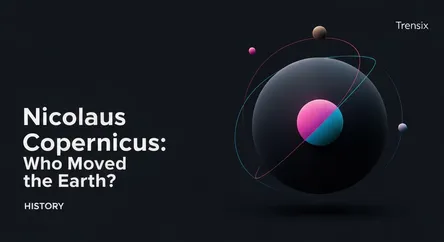History
Nicolaus Copernicus: Who Moved the Earth?

A look at Nicolaus Copernicus, the astronomer whose heliocentric model placed the Sun at the center of the universe, transforming science and our place in it.
What is it?
Nicolaus Copernicus (1473-1543) was a Polish astronomer and mathematician who formulated a groundbreaking model of the universe. In his book, De revolutionibus orbium coelestium (On the Revolutions of the Heavenly Spheres), published just before his death in 1543, he proposed a heliocentric system. This model positioned a stationary Sun at the center of the universe, with Earth and the other planets revolving around it. Copernicus's theory also stated that the Earth spins on its axis once daily. This was a radical departure from the widely accepted geocentric model of Ptolemy, which had placed a motionless Earth at the center for centuries.
Why is it trending?
Copernicus is a perpetually significant figure because his work triggered the Copernican Revolution, a defining event in the history of science. This shift from an Earth-centered to a Sun-centered cosmos fundamentally challenged the scientific and religious dogma of the time. His model laid the foundation for the broader Scientific Revolution, influencing later key figures like Galileo, Kepler, and Newton. Although the Church later banned his book for a time, the elegant, mathematical basis of his work helped usher in an era where observation and evidence began to take precedence over scriptural interpretation in understanding the natural world.
How does it affect people?
The work of Copernicus fundamentally changed humanity's understanding of its place in the universe. By demonstrating that Earth was not the center, his model displaced humans from their privileged position in the cosmos, a shift with profound philosophical and cultural consequences. This change encouraged a more objective and evidence-based approach to knowledge, which became a cornerstone of modern scientific methodology. The revolution he started ultimately paved the way for modern astronomy and physics, shaping the scientific progress that underpins much of today's technology and our current cosmic perspective.